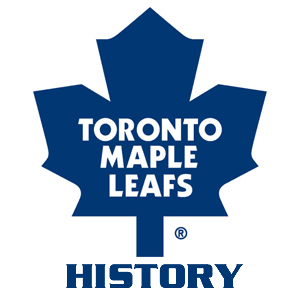While the rest of the NHL was taking shape, the Toronto Maple Leafs’ organization was continually evolving, welcoming names that would become Hall of Famers both on the ice and in the office.
At the head, donning a fedora, loose dress pants and a long businessman blazer was Constantine Falkland Smythe, a.k.a. Conn.
The son of a reporter for the Toronto World, Smythe lost his mother at the age of 11.
His father worked hard to put him through school at Upper Canada College. Thereafter, he would enlist in Canada’s WWI effort in 1915 as a gunner in the 25th Battery, Canadian Field Artillery.
In February 1917, the man who would become founding father of the Maple Leafs would attack a German trench armed only with his revolver. His bravery earned him a Military Cross. In October of the same year a plane he was in crashed and he was taken prisoner.
In his autobiography Smythe said, “The two qualities I admire the most are guts and loyalty.”
Once the war had ebbed, Smythe returned to the classroom, earning himself an engineering degree from U of T. From there on he became a businessman, running C. Smythe For Sand.
He married Irene Sands on March 10, 1920.
Smythe’s love for hockey had begun while he played for UCC. He coached at the collegiate level, winning the Allan Cup in 1927 with the Varsity Blues, downing McGill in the final.
He parlayed that success into a job with the NHL’s New York Rangers. Then owner Colonel John Hammond reaped the benefits of Smythe’s natural talent in picking prospects, as the Rangers would go on to win the Stanley Cup in 1928 — but only after Smythe was fired, just six months after his hiring.
That proved to be a benefit for Toronto, as Smythe purchased the Toronto St. Pats for $160,000 with an additional $40,000 chipped to match an interested Philadelphia party’s offer.
The move was a success for Smythe, and for Toronto. He would build landmark arena Maple Leaf Gardens during the Depression’s rock-bottom days. The first game would be Nov. 12, 1931.
Smythe would see seven Stanley Cups until a rough patch in 1951.
A shake-up of the front office ensued in 1955, as Smythe stepped down as GM. His son Stafford, itching to get a higher post in the front office took over management in 1957. With him were six others, including Toronto Telegram publisher John Bassett and Toronto Marlboros owner Harold Ballard who would handle the business end of the Leafs — the birth of the Silver Seven, as they called themselves.
With a new farm system to draw from, the Leafs returned to their winning ways with players like Dave Keon and Frank Mahovolich.
Punch Imlach was hired by Stafford to coach. The Stanley Cup finals were visited by the Leafs again in 1959. They would win the cup in 1961 and three more times that decade.
In November of 1961, Conn Smythe officially stepped aside as owner of the Maple Leafs. He sold 50,000 shares, worth 60 percent voting rights, to Ballard, Bassett and son Stafford. The deal was short-lived, as Bassett would sell his shares in 1969. After Stafford Smythe died, Ballard bought his shares with the help of friend Don Giffin.
The Leafs would stay competitive through the successive expansions of the NHL during the lifetime of Conn Smythe until he passed away on Nov. 18, 1980.
In 1958 the NHL had recognized his building of the sport by inducting him into the Hockey Hall of Fame, which still today notes his legendarily fierce philosophy of the game with the quote that is always associated with Smythe: “If you can’t beat ’em in the alley, you won’t beat ’em on the ice.”
In 1965 the league created an award in his name for the Most Valuable Player in the Stanley Cup playoffs, which is still presented each year as the Conn Smythe Memorial Trophy.
Sponsored by The Canadian Experience and Maple Leaf Sports + Entertainment, “Canada’s Hockey Experience: The Sport of a Country” is a unique, 20-week online series on the history of hockey.

